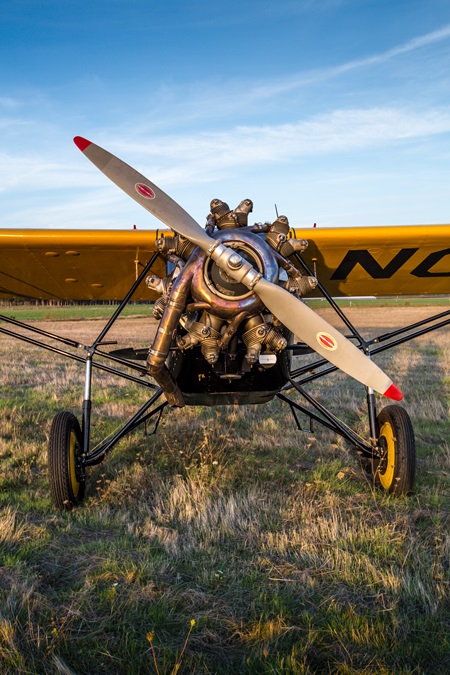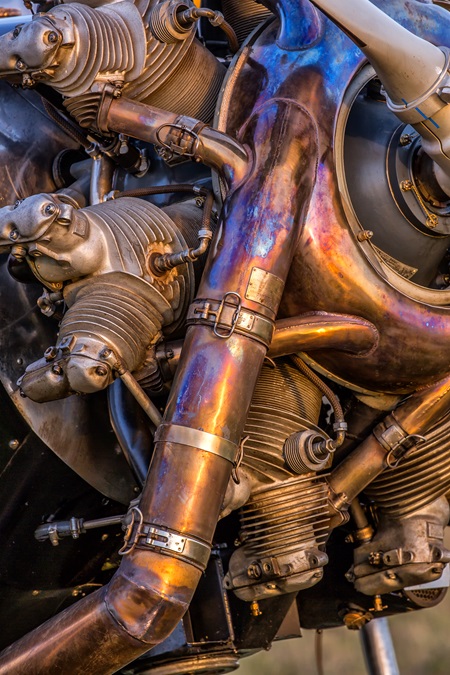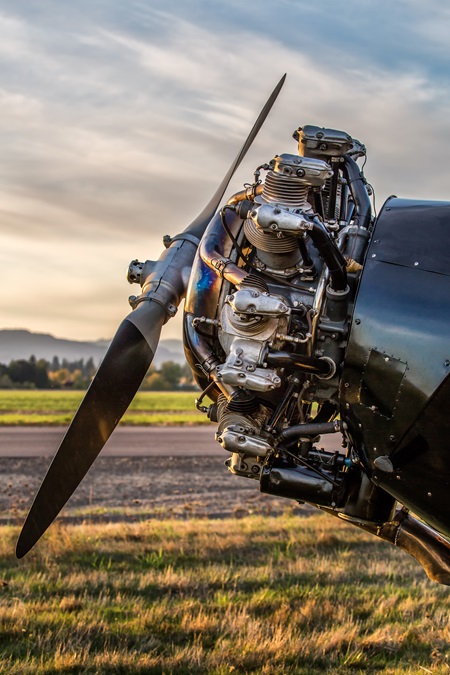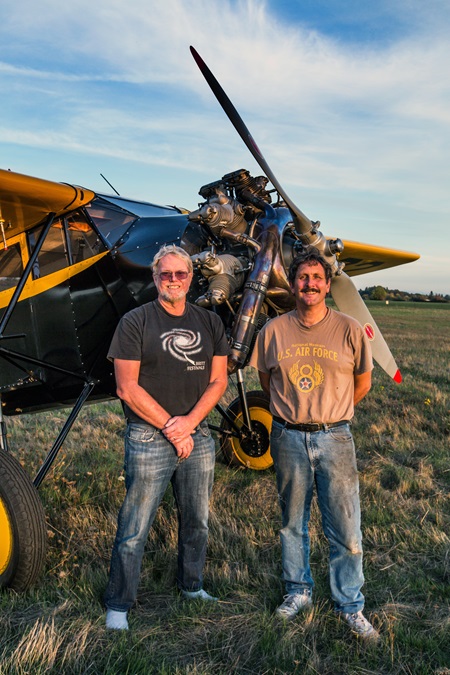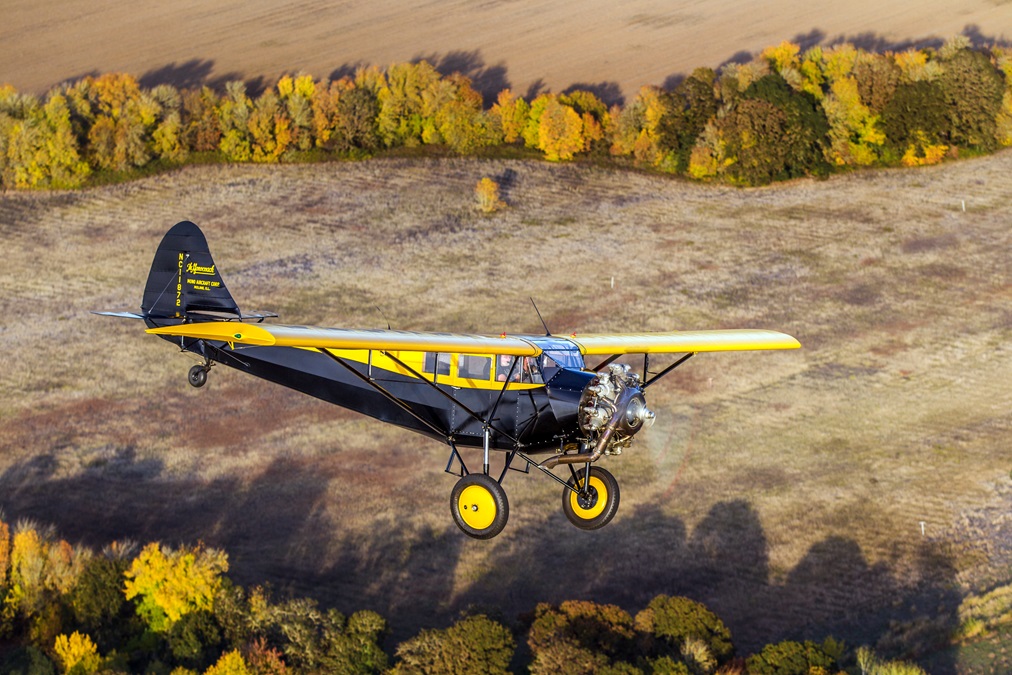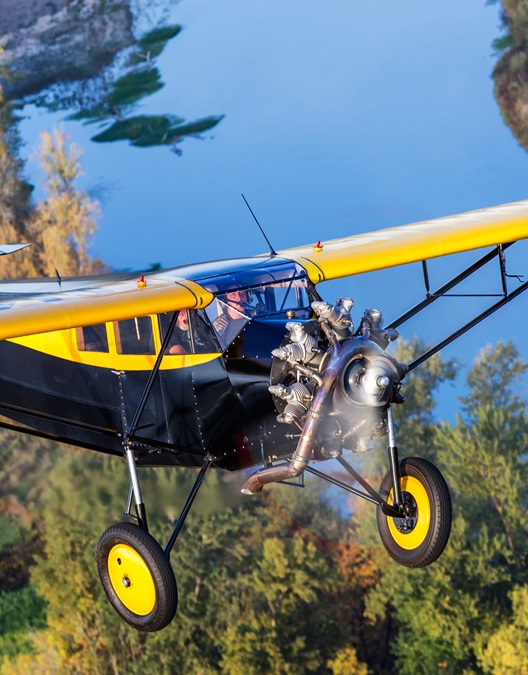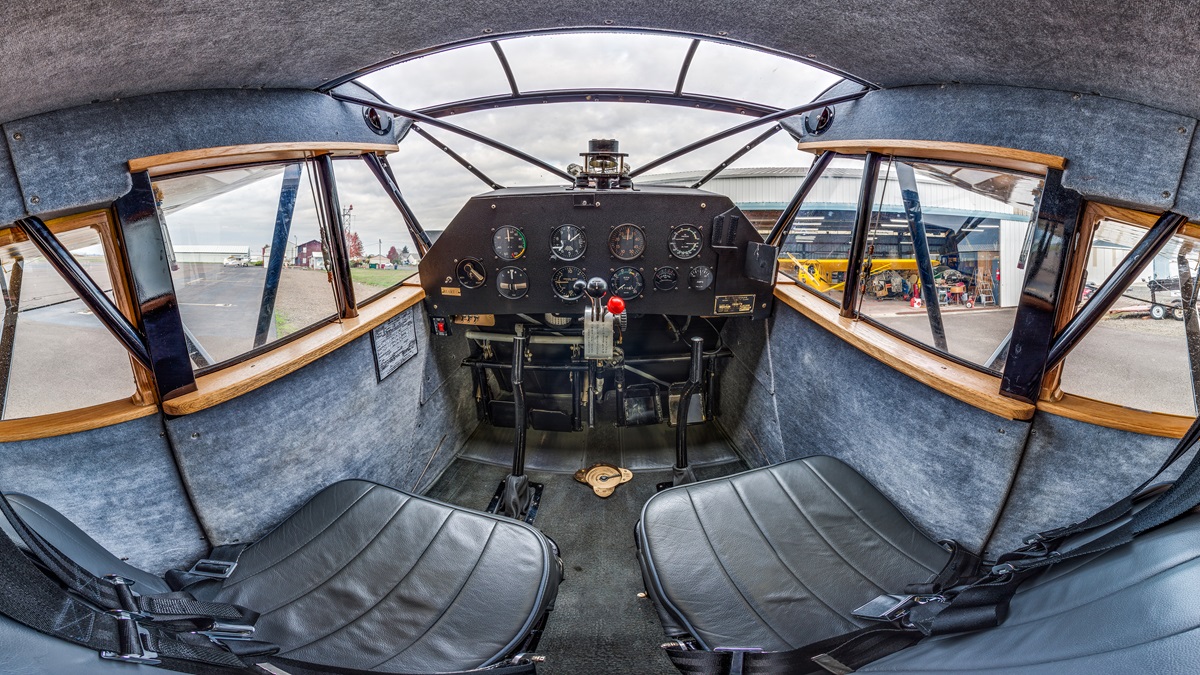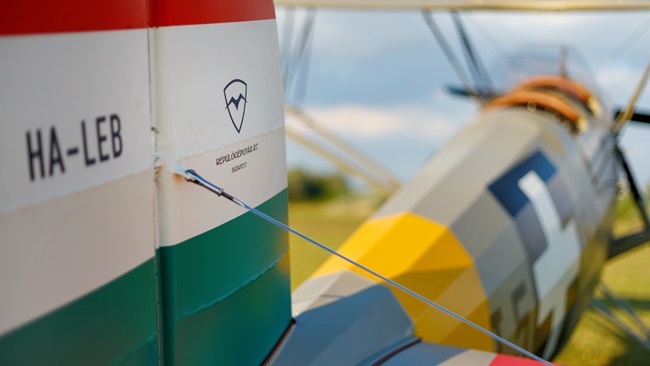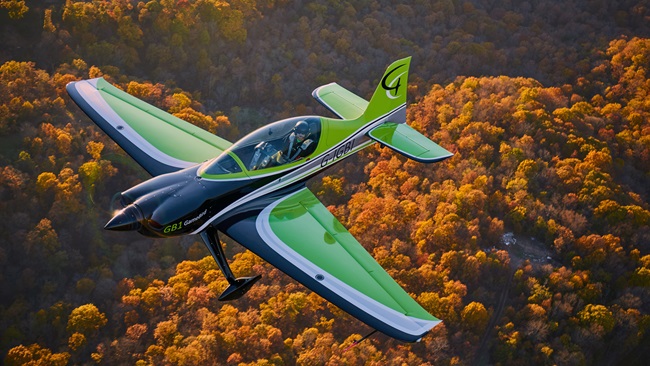The last unicorn
Flying the only remaining Monocoach
The pixyish two-seat Monocoupe was the epitome of sportiness and speed in the 1920s. It made a reputation winning races and had sold successfully enough that at one point, Monocoupes made up 10 percent of registered civilian airplanes in the United States. Sensing a larger market, Mono Corporation President Don Luscombe decide to try a four-seat, high-wing cabin monoplane. Popularized by Lindbergh’s Ryan Spirit of St. Louis, Fairchild, Cessna, Stinson, Bellanca, and several others had built airplanes to the formula. Luscombe’s hopes were never realized. In this crowded market, and in the face of a recession that became the Great Depression, the Monocoach never really found a niche. NC11872 is the only survivor. It owes its continued existence to two factors: its ability to perform useful work and its status as a unique antique.
The former kept the airplane running for four decades as it served as a utility transport and agricultural airplane in California, a backwoods delivery vehicle in Idaho, and a personal mount for several owners in the Pacific Northwest.
The latter eventually brought it to the attention of the man who worked 10 years to resurrect and restore it: William “Bill” Piper, an “airplane guy” of the round- engine persuasion. Originally from Canada, he served in the U.S. Air Force, where he decided on a multiengine career.
“I didn’t mind fighters—it was just that I liked round engines more,” he said. “In my day, Air Force fighters had V–12s or jets, so I started on the B–25 and quickly went to the Douglas B–26. Later, I flew helicopters—quite a few of those had round engines, too—and transports. Restoring and building aircraft has been my passion for more than 40 years,”
Piper found the Monocoach in British Columbia, where it had ended up after a nasty accident in Washington state. Between the impact and further damage caused by rescuers cutting away structure to remove the occupants, the steel-tube fuselage was a twisted wreck. The wings were a similar mess, and the landing gear badly sprained. Considering the many alterations made over a 40-year working life and the damage from the accident, re-creating the original Monocoach was a huge project for one man to tackle.
He began with the fuselage. There was no hope of rebuilding the mangled original, so he straightened it until he was sure that the important points—engine mount, wing spar fittings, strut, and landing gear attachments—were in the correct position. He then welded a steel “exoskeleton” jig that fixed these points in space. Working from that, he fabricated an entirely new fuselage, using 4130 steel tube throughout
“The toughest job was building new wing struts,” Piper recalled. “The originals were 1025 steel, and I just couldn’t find tubing in that material anywhere. I did find 4130 tubing that was very close dimensionally to the original, and I knew that 4130 was stronger, so I expected no trouble getting it approved. But when the DER [designated engineering representative] checked into it, we were both surprised to find out that 1025 was stronger in the compression loads that would be imposed by a hard landing or a sudden negative-G gust. 4130 wasn’t going to work.
“It took several tries, but eventually I had a local company with a hydraulic press bend a sheet of 0.049- thick 1025 into a long ‘U.’ I squeezed that together on the trailing edge and welded it. I had to submerge the whole thing in a trough of water with just the trailing edge sticking out while I welded—it was the only way I found of keeping it straight.”
Most restorations, especially when original drawings or parts are not available, are licensed in the relatively permissive Experimental-Exhibition category. But Piper wanted to qualify for the original Standard category, which meant that every part had to be signed off as meeting the original specifications or as an acceptable substitute. Since Piper was making much of the new structure himself, the FAA would have to sign off the engineering and quality of every replacement part. The paperwork was formidable.
“I found the FAA quite cooperative,” Piper said. “They did their job and checked my work, but they never threw up impossible barriers. They approved the airplane in the Standard category, just as it was originally. I’m quite proud of that.”
In 2002 he flew the airplane and kept flying it until 2007, when a small retaining clip in the landing gear oleo failed during a landing in Washington. The slow- motion pivot into the weeds tore up the landing gear and prompted another restoration. While the job was nothing as extensive as the original, Piper realized that age was working against him. When the airplane was ready to fly again, it was time to find a new owner/pilot who understood old airplanes.
Once again the Monocoach was fortunate—and found the perfect owner to appreciate it and fly it properly. Robin Reid is about as deeply rooted in aviation as it is possible to be; his family founded the Reid-Hillview of Santa Clara County Airport in San Jose, California, and he grew up on the field. His mother soloed him in a Piper J–3 on his sixteenth birthday, and he has spent a large part of the following 46 years in the air. Reid is probably the only pilot in the world who’s been current in the J–3, the de Havilland DH.88 Comet, and the Boeing 747 at the same time. When he flew the Monocoach from Idaho to his home in Independence, it must have felt right at home—it’s hangared with the Cub Reid soloed, his grandfather’s Krieder-Reisner biplane, a Porterfield under restoration, and parts of many other airplanes, none less than 50 years old.
According to Reid, the key words for flying old airplanes are “patience” and “respect.”
“You have to treat an airplane from the 1920s like you would an older personal friend,” he said. “Old people and old airplanes can still do amazing amounts of solid work, but it takes a little more time and planning. Don’t ask them to do anything without warming up first, and don’t try anything that requires too much strength or agility. Don’t expect an old airplane to fly like a modern one, any more than you’d expect your grandparents to dance in a mosh pit—they were conceived in a different age and had to meet different expectations. Do respect the fact that the old ways worked well in their day, and you can learn something from them.”
With that in mind, Reid ushered me into the world of oak trim and mohair upholstery.
Welcome to the Roaring Twenties
Flying the Monocoach is more a trip through time than space. Just getting in can be quite a challenge. In his book Of Monocoupes and Men, John Underwood calls the Monocoach a “roomy” airplane.
This is a damnable lie.
While a pair of normal adult humans can, in tight embrace, occupy the rear bench seat, the front seats are sized for adult squirrels. You must fold down the seatback and somehow lift one leg over it while doubled over against the cabin roof. After that, force your legs around the stick and onto the rudder pedals, which are set close to each other and about two shoe-lengths in front of the seat.
But once the embarrassing contortions are over, you’re reclined in a Roaring Twenties parlor. On top of the glareshield is a compass that looks like something out of a lighthouse, and in front of that are a couple of massive cylinders attached to a Wright R-760 of 235 horsepower. You have a great view of the sky almost immediately overhead, but to see a bit of the taxiway, you must lean your head against the side window and peer past the beveled corner of the panel.
Prime with a couple pumps on the turkey-baster-sized plunger, set the mags, advance the mixture, and hit the electric starter. The prop moves, there are a couple of chuffs from various cylinders, and the cabin is enveloped in the cloud of white smoke that lets the world know a radial is about to do some work.
Taxiing is careful and slow, in deference to the limited view and the mechanical brakes. Once the runway is achieved, keep things lined up with a combination of forward and peripheral vision as the power comes in. The tail comes up fairly quickly, and out of the corner of your eye you can see the landing gear oleos getting longer; then, the big wheel separates from its shadow and you’re aloft in the last Monocoach on Earth.
In the air it rumbles along at about 85 knots, solid as can be. You won’t get anywhere fast, but then, not much will disturb you from your intended course. Turns are biceptual—you’ll have to apply some muscle to the ailerons and do some footwork to stay coordinated. The view over the nose isn’t great, so double-check pitch attitude by looking down the length of the wing.
The landing approach is fairly flat—there are no flaps. There’s no doubt about when the wheels will touch; you can see them right outside the window. Once the tires are on, the landing has started, but it’s still a long way from finished. Slowly the tail sinks down, down, down until your feet—still working to keep things going straight—are about level with your hips. The tailwheel takes over the steering duties as the airplane rolls out and directs the nose into the rough grass. Pull the mixture and the huge metal prop clanks through the last couple of compression strokes before stopping.
Every person who had a hand in building this airplane 86 years ago is long gone, but their handiwork is still doing exactly what they intended it to do. So take a moment. Look through the struts and braces; watch the long grass wave around the wheels. Listen to the clinking exhaust cool and smell the hot oil. Hard work and a bit of luck have preserved this small link in the chain leading to the airplanes we have today. Just for a minute, it’s 1929 and you’ve flown a—the!—Monocoach.
Ken Scott recently retired from Van’s Aircraft. He builds and flies airplanes at his home on an Oregon airpark.
Photography by Lyle Jansma
